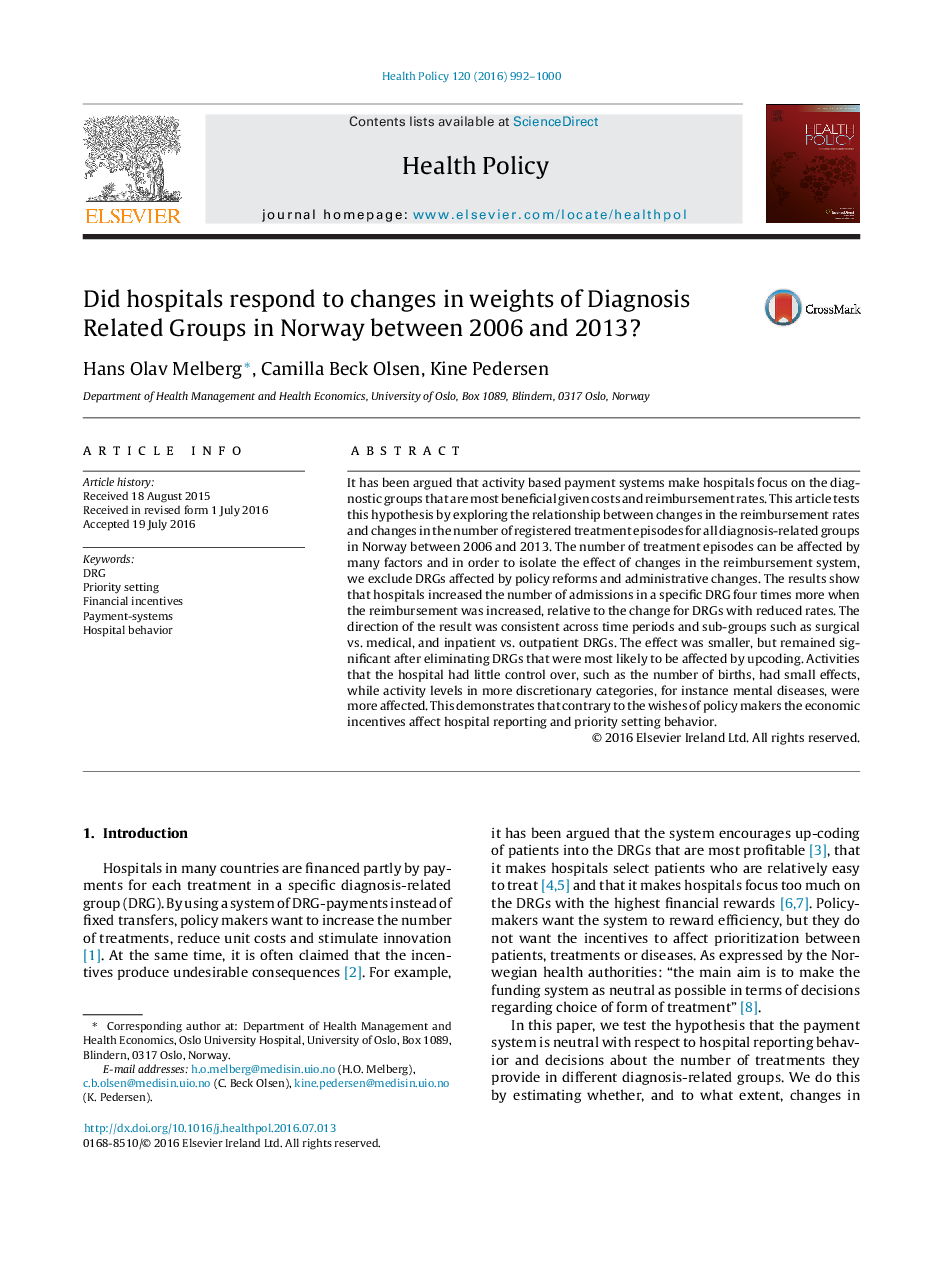| کد مقاله | کد نشریه | سال انتشار | مقاله انگلیسی | نسخه تمام متن |
|---|---|---|---|---|
| 5723517 | 1411454 | 2016 | 9 صفحه PDF | دانلود رایگان |
- Activity in DRGs with increased DRG-weights increased four times more than other DRGs
- Eliminating upcoding reduced the effect, but it was still significant.
- It is important to frequently update DRG-weights to avoid misaligned incentives.
It has been argued that activity based payment systems make hospitals focus on the diagnostic groups that are most beneficial given costs and reimbursement rates. This article tests this hypothesis by exploring the relationship between changes in the reimbursement rates and changes in the number of registered treatment episodes for all diagnosis-related groups in Norway between 2006 and 2013. The number of treatment episodes can be affected by many factors and in order to isolate the effect of changes in the reimbursement system, we exclude DRGs affected by policy reforms and administrative changes. The results show that hospitals increased the number of admissions in a specific DRG four times more when the reimbursement was increased, relative to the change for DRGs with reduced rates. The direction of the result was consistent across time periods and sub-groups such as surgical vs. medical, and inpatient vs. outpatient DRGs. The effect was smaller, but remained significant after eliminating DRGs that were most likely to be affected by upcoding. Activities that the hospital had little control over, such as the number of births, had small effects, while activity levels in more discretionary categories, for instance mental diseases, were more affected. This demonstrates that contrary to the wishes of policy makers the economic incentives affect hospital reporting and priority setting behavior.
Journal: Health Policy - Volume 120, Issue 9, September 2016, Pages 992-1000
